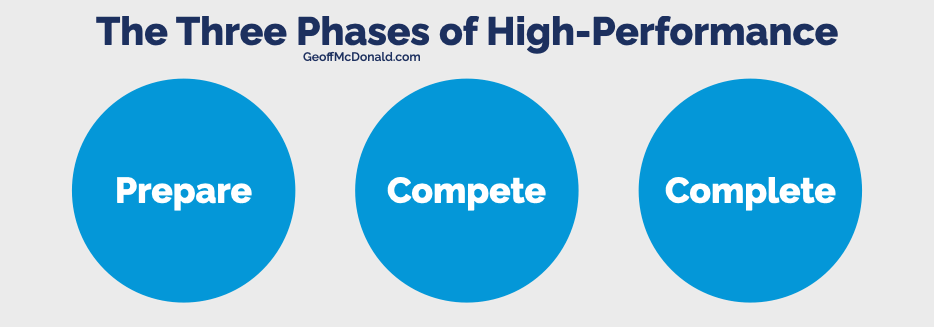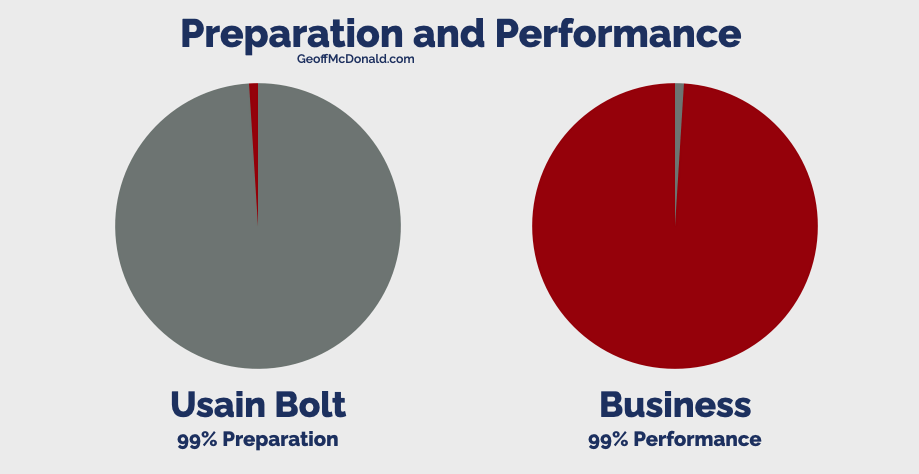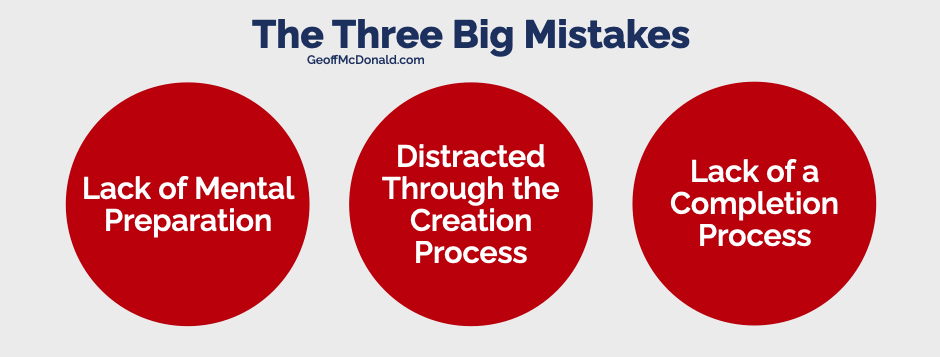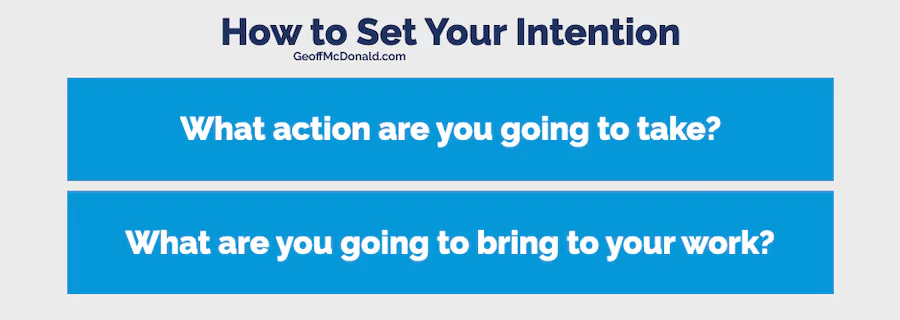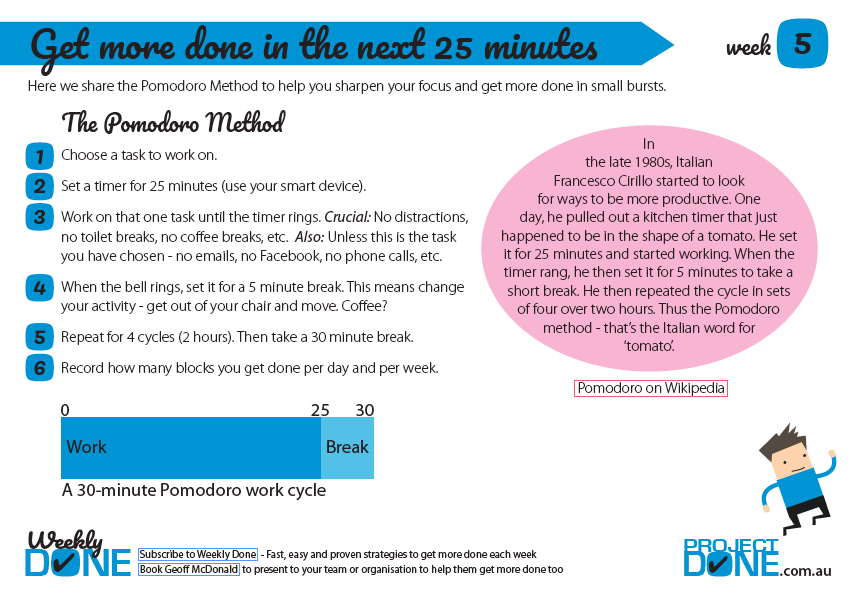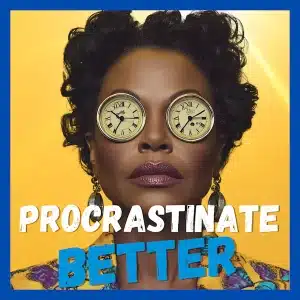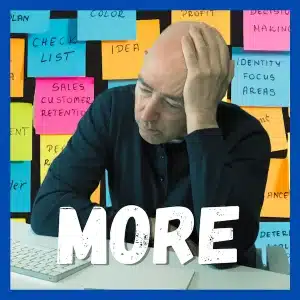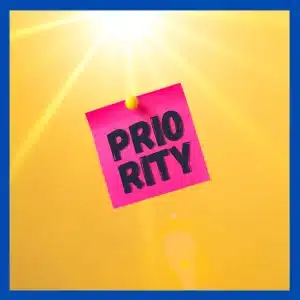What are the keys to an effective Content Creation Process? How do you consistently produce good quality content?
It takes a strong commitment to create and publish content on a regular basis. It’s not easy to be consistent over time.
But too many content creators and thought leaders make this harder than it needs to be because they make three basic mistakes.
In this post, we’ll follow the proven 3-part formula used by elite athletes to consistently publish quality content.
This is Part Seven and the final part of our seven-part series on the Content Creation Canvas. Now that you’ve completed the six previous and created a clear content creation strategy, we’re asking the crucial question: What behaviours will create this? What actions do you need to take to make this happen?
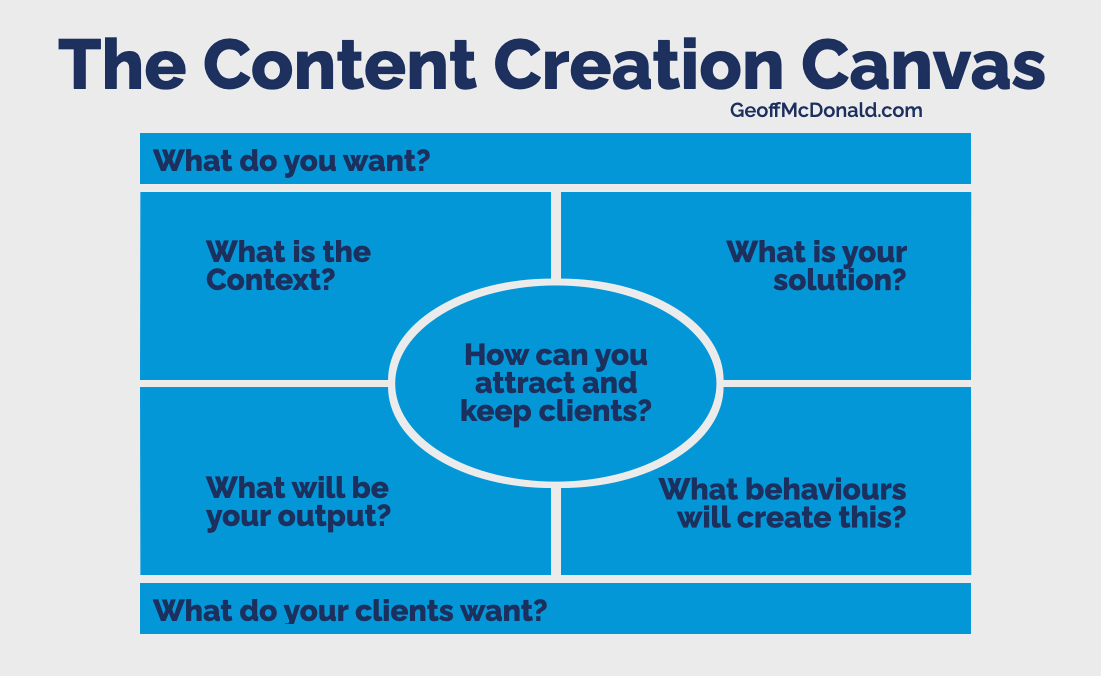
The Three Big Content Creation Mistakes
How Usain Bolt won Olympic Gold
Usain Bolt won eight Olympic Gold Medals. He was the world’s fastest man until a few years ago when he retired.
His pet event, the 100 metres lasted 10 seconds. But Usain Bolt didn’t just turn up at the track and start running when the gun went off.
He followed the three phases that all high performers do:
- Preparation
- Performance
- Completion
Bolt only raced for seconds but he trained for over 20 hours each week. That’s 99% preparation and recovery for 1% competition.
Most of us in business do the opposite – we’re always in competition mode with little or no preparation and recovery. And we wonder why we do mediocre work and we struggle with our mental health.
Also, given Bolt’s races were so short, every moment mattered. He had to be mentally switched on to perform at his best the instant the starting gun sounded.
Likewise, during the race, he had to be 100% focused on running as fast as he could.
And when the race was over, he had practices and habits that prepared him to perform better next time.
The Three Big Mistakes Content Creators Make
It’s in these three areas where content creators and thought leaders make three big mistakes.
- You dive into creating content without mentally preparing yourself
- You are distracted consistently during the process
- And you lack a completion process such that all your tasks blur together.
All three of these mistakes relate to the mental or mindset side of content creation.
Most people don’t talk about this. Instead, they focus on what to create and where to publish it.
But if you want to be a high performer consistently over time then you need to build a robust Content Creation process that addresses these issues. You need to know how you’re going to create your content and publish it. There’s no point in having the best content creation strategy in the world if you don’t implement it.
And the good news, there are some simple practices and habits you can build to overcome them.
The first phase of your Content Creation Process
The first phase of your Content Creation Process needs to focus on your preparation. It’s what you do before you start creating content.
At the big picture or global level, you need to be learning and growing.
In the same way, Usain Bolt lifts weights, if you want to be a thought leader, you need to lift weights to expand what you know and to communicate it more powerfully. This includes reading books, taking courses, having a coach and more.
At the day-to-day level, you need a practice that prepares you mentally to produce great work.
Athletes stretch their muscles so they can run fast. Thought leaders need to prepare their mental attention.
Two things you need to focus on
The key is to set an intention for the work you are about to do.
(A big thank you to my mindfulness teacher, Mark Molony for this practice. I spoke to Mark in two episodes of the Ideas Architect podcast – Mighty Mindfulness here and Mindfulness and Productivity here.)
When you sit down to create your content, take a moment to stop, think and ask yourself these two questions:
- What action are you about to take?
- What are you going to bring to your work?
The first question is all about doing. ‘I am going to do this.’ You might even add, ‘I am going to do this because…’ and add motivation to your answer.
The second question is all about your way of being. Your way of being drives your actions because it addresses how you will act.
- Are you going to be stressed out like usual or stay calm regardless of what happens?
- Are you going to be bored by your work or curious as to what you might create?
- Or are you going to do things the same old way or are you going to explore fresh alternatives?
Add this simple practice to your Content Creation Process to focus on what is important and the best way you can achieve this.
The second phase of your Content Creation Process: DURING
The second phase of your content creation process is about being at your best during the creation process.
I’ve talked about the importance of Deep Work in previous posts. Deep work is defined as doing deep thinking which requires deep concentration. And this requires eliminating or reducing your distractions.
If you’re not doing deep work, then you will never become a thought leader.
The simplest and best productivity habit I have found – the one I use – to minimise distractions and do deep work is based on a tomato.
In the late 1980s Italian Francesco Cirillo was looking for ways to be productive. One day he pulled out a kitchen timer that just happened to be shaped like a tomato. And he set the timer for 25 minutes and started working.
Thus, the Pomodoro Technique (Pomodoro is the Italian word for tomato.)
You can learn this technique in minutes. Here are the steps to learning the Pomodoro Technique.
- Choose a task to work on.
- Set a timer for 25 minutes.
- Work on that one task until the timer rings.
The crucial thing – and the key to the success of this method – is that you are not allowed any distractions during this time. No coffee, no toilet breaks, etc. Unless this is the task you have chosen, this also means no phone calls, no social media, and no emails.
- When the bell rings, set it for a 5-minute break. This means to stand up, get out of your chair and go and do something else. This is when you can grab a coffee.
- Repeat the cycle four times. Then take a 30-minute break.
Add these mini sprints to your Content Creation Process and I guarantee you will deepen your concentration and most importantly get more done in less time.
I wrote about this in my book, Weekly Done – see the image below:
The third phase of your Content Creation Process: AFTER
The third phase of your content creation process is what you do after you’ve published your content. It teaches you how to improve your performance next time.
Here are two simple practices that I do regularly as part of my Content Creation Process.
1 Review
After every video I publish on YouTube I sit down to review it. I take lots of notes about what worked, what I learnt, areas for improvement and lessons for next time. It’s looking for things that:
- You did well that you want to repeat in the future
- Didn’t turn out as you had hoped so you can avoid it next time
- Were new or taken to a new level eg. I added a sound effect for the first time. This is part of claiming the steps and progress you are taking.
- And it’s looking for things that were OK but if you tweaked could be really great. eg. the sound effect was good but it could be better if I add a visual too.
After 40 videos, I have written over 13,000 words. That’s a one-page review of every video. This serves two purposes:
- The act of writing these needs is the act of thinking clearly about what worked.
- It’s a record of what I did and the progress I’m making. (Given I have such great notes, I’m thinking this might become a course in the future that I offer to coach people in creating videos. It’s often hard when we become an expert to teach beginners because we forget what it’s like to be starting out. But with these notes, I will know what I went through.)
Review what you’ve done so you’ll know how to make it better next time.
Remember, this is not about beating yourself for all the things you could have or should have done. Instead, your intent is to define how to improve your next effort.
3 Celebrate
This second practice is something I do immediately after I’ve hit the ‘publish’ button on YouTube. It’s a personal celebration.
This one comes from my habits coach Taruni Falconer. (I spoke with her on the Ideas Architect Podcast here talking about Cross-Cultural Leadership Habits.)

The practices in this video are all about building a Content Creation Process that you can repeat. To build robust habits, you need to wire your brain to take that action on a regular basis. That’s what a habit is.
By doing a personal celebration you tell your brain that you want to do more of this because it felt good to do it.
And a personal celebration can be as simple as something you do, something you say or a body movement. For example:
- Simple action: a big smile, clenching your fist, slapping your thigh, a high-five,
- Saying a word or phrase: awesome, yay, well done, good work Geoff or I did it,
- A body movement: doing a star jump, a victory salute or a happy dance
Ideally, do all three. Have some fun with this!
(PS: You can apply the personal celebration to any habit you want to build. Remember, if you make the celebration fun your brain will link that to the activity you just completed and you’ll train yourself to do that more often.)
More on Content Creation Process
Well done. You’ve now completed the seven videos relating to the seven elements of the Content Creation Canvas. Time for a personal celebration? You betcha.
If you want to dive deeper into your content creation planning, here are three related posts:
- Overview: Content Creation Canvas: Build thought leadership, attract new clients
- Part 1 in this 7-part series: Content Strategy 2022 – Best framework for Thought Leaders
- The most important thought leadership skills to develop
A question for you…
Which one of the three phases of high performance is the area you most need to work on?

